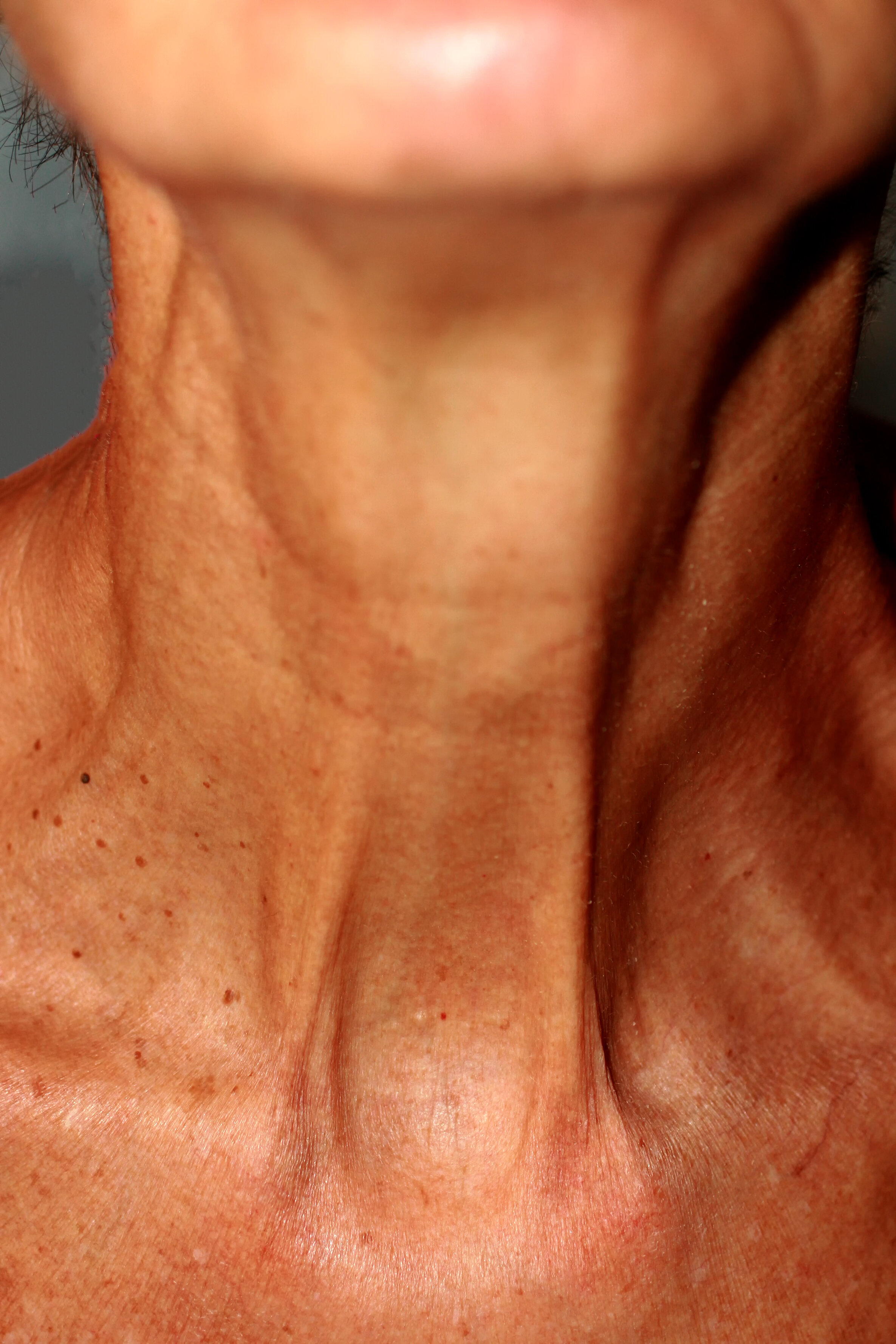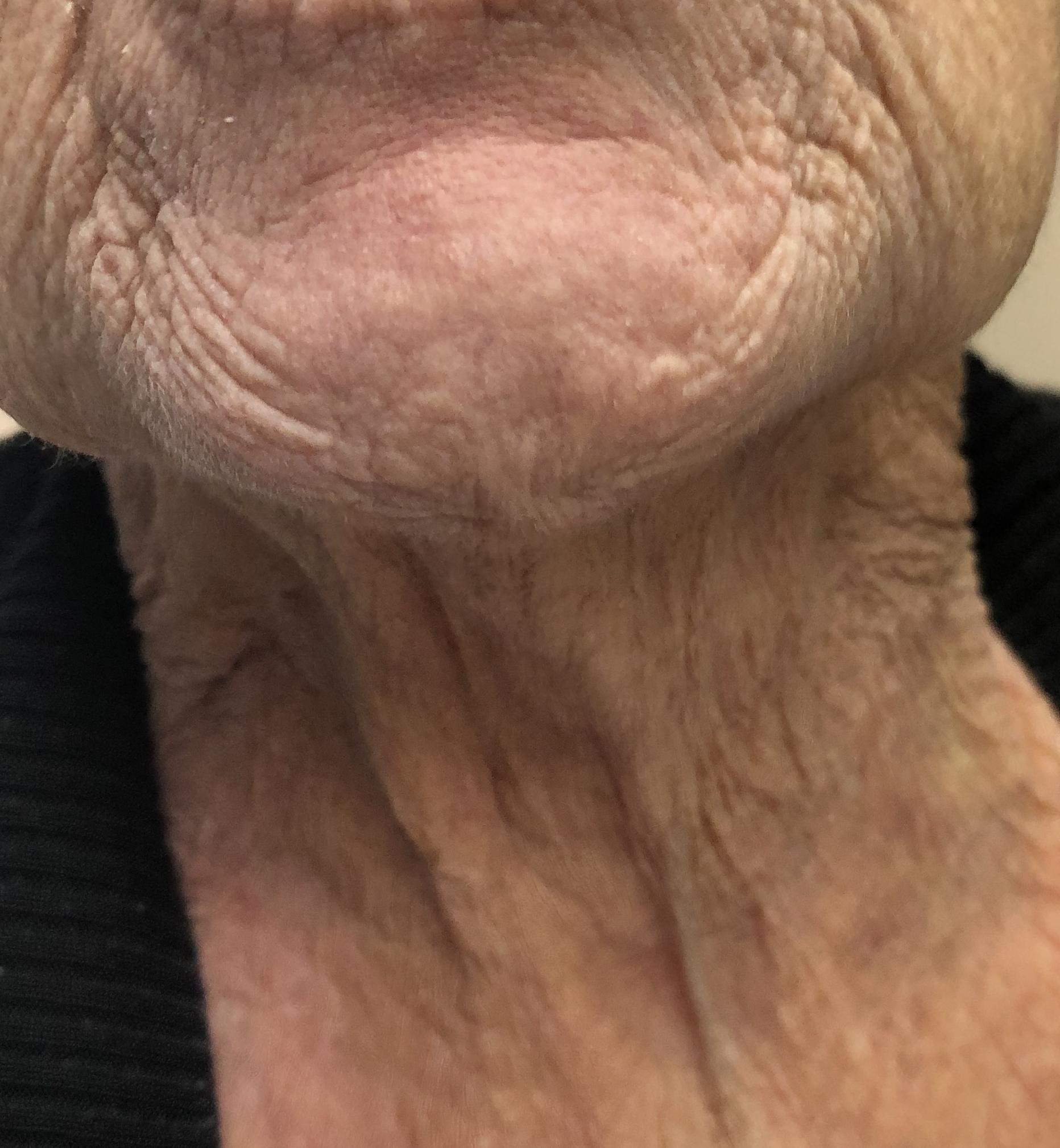Aesthetic Conditions: Aging Neck
Whether it’s wrinkles, loose skin, loss of the jawline, or vertical bands, a neck may demonstrate a myriad of unwanted changes over time.
submental blunting (and turkey gobbler)
Ideally, the chin should project out from the neck with a sharp angle between the jawbone and the front of the neck. This may result from a genetic predisposition to a small jawbone or thick neck, but even people graced with a nicely defined neck to chin angle in young adulthood, however, may loose it over time due to laxity of the skin or the development of a fat pad in this area. The term “turkey gobbler” refers to excess loose skin under the chin without much fat, resulting in a loose flap of skin.
vertical bands (platysma bands)
The bands running up and down along the neck in middle and older aged individuals are due to a muscle in the neck called the platysma. This thin muscle is present from birth, but the contracted edges of the muscle show more and more with age, and thus have become a sign of age itself. §
Neck skin laxity
As we age, our skin looses elasticity. In the neck, this shows itself as lax or redundant extra skin.
crepe paper skin
The effects of age and sun cause wrinkling on the skin of the neck in a unique way. The horizontal wrinkles may become more prominent and the texture of the skin may develop a pattern of short, random angled ridges that resemble crepe paper.
This page






